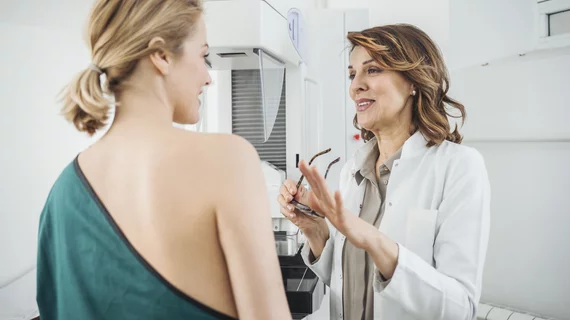Great gains in breast cancer mortality rates have been seen over the past 20 years thanks to advances in screening, but many women still do not seek out diagnosis.
A group of three researchers set out to better understand why, and if age or various comorbidities have any impact on mammography use, publishing their findings Oct. 16 in the Journal of the American College of Radiology.
“Although many studies have demonstrated that beneficial preventive care is underused, limited studies have evaluated use of screening mammography among patients with respect to a patient’s comorbid conditions and age,” wrote Cindy Yuan, MD, PhD, with the University of Chicago’s Department of Radiology, and colleagues.
“A better understanding of how age and comorbid conditions affect mammography use may help target specific populations and improve use of preventive care,” the team added.
Yuan and co-authors looked at Medical Expenditure Panel Survey data from 2011 to 2015, which included records from 40,752 women older than 40 years old. Of the more than 36,000 women included in the study, 45.9% had a history of hypertension (HTN), 43.6% had hyperlipidemia (HLD), 3.9% reported prior heart attack (MI) and 5.7% cited prior stroke. Women without a comorbid condition reported a 47.3% annual mammography utilization rate.
Overall, the results showed women increasingly utilize mammography up until they turn 60, with a steady drop in use reported after that. Compared to their healthy peers, women with chronic conditions such as HTN and HLD utilized screening mammography more (2.5 and 6.8 percentage points, respectively). Past MI and stroke were associated with decreased mammography use—8.2 and 1.5 percentage points, respectively.
The authors examined many possible explanations for their findings, most related to how healthcare is provided.
For example, healthy patients generally visit the doctor less and, therefore, have fewer chances for a physician to remind them of mammography’s benefits. Additionally, they noted, women with HTN or HLD might have lower incremental costs for screening compared to a healthy woman who must pay for both an initial care visit and one involving a mammogram.
“Regardless of the possible explanation, this finding emphasizes a shortfall in our current system, whereby the healthiest women, who have the most to gain from cancer screening, are underutilizing screening services,” Yuan and colleagues emphasized.
So what are the potential solutions?
Lowering barriers to screening and encouraging patients to seek out an exam are both solutions to think about, the team wrote. Improving educational outreach regarding the benefits of mammography is also an obvious goal.
When looking at the lower utilization rates among women with prior MI or stroke, Yuan et al. suggested that the conditions decrease life expectancy—a known factor with decreased usage—and therefore women may be actively avoiding mammograms. The conditions also limit mobility, making it difficult for many patients to physically travel to a clinic for an exam.

